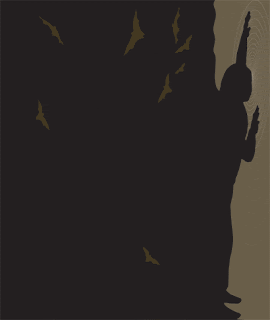 Jodi Cooley works half a mile underground, in a mine that stopped operating 40 years ago. A rattling elevator takes her to work, 27 floors beneath the surface. The ride down the mineshaft is five minutes of complete darkness. A colony of bats inhabits the mine.
Jodi Cooley works half a mile underground, in a mine that stopped operating 40 years ago. A rattling elevator takes her to work, 27 floors beneath the surface. The ride down the mineshaft is five minutes of complete darkness. A colony of bats inhabits the mine. "For someone who's squeamish," says Cooley, "it's not the best work environment." When she is on shift she spends 10 hours a day in the mine, 10 days in a row. Looking to find a new type of particle, Cooley is listening for whispers of dark matter.
The underground experiment she works on, a collaboration of 60 physicists and engineers, is the world's most sensitive search for a type of particle that, as of yet, has only been theorized. The Cryogenic Dark Matter Search (CDMS) uses detectors chilled nearly to the lowest possible temperature, minus 273 degrees Celsius, to "listen" for vibrations caused by these particles streaming in from space. The discovery of these particles would revolutionize our view of the cosmos.
For Cooley, a postdoc at Stanford University, a day at the Soudan Underground Laboratory in Minnesota begins with a cup of coffee. After a telephone meeting with Dan Bauer, who leads the CDMS operations, she and her shift partner spend the rest of the day monitoring the experiment's cooling system, detectors, and electronics. Cooley, speaking from the mine by telephone, says she never suffers from boredom.
"Even when things are going smoothly, down here we can always find more work to do," she says. "There is no lack of work to be done."
Read the full article at symmetrymagazine.org.
--Danielle Venton





No comments:
Post a Comment